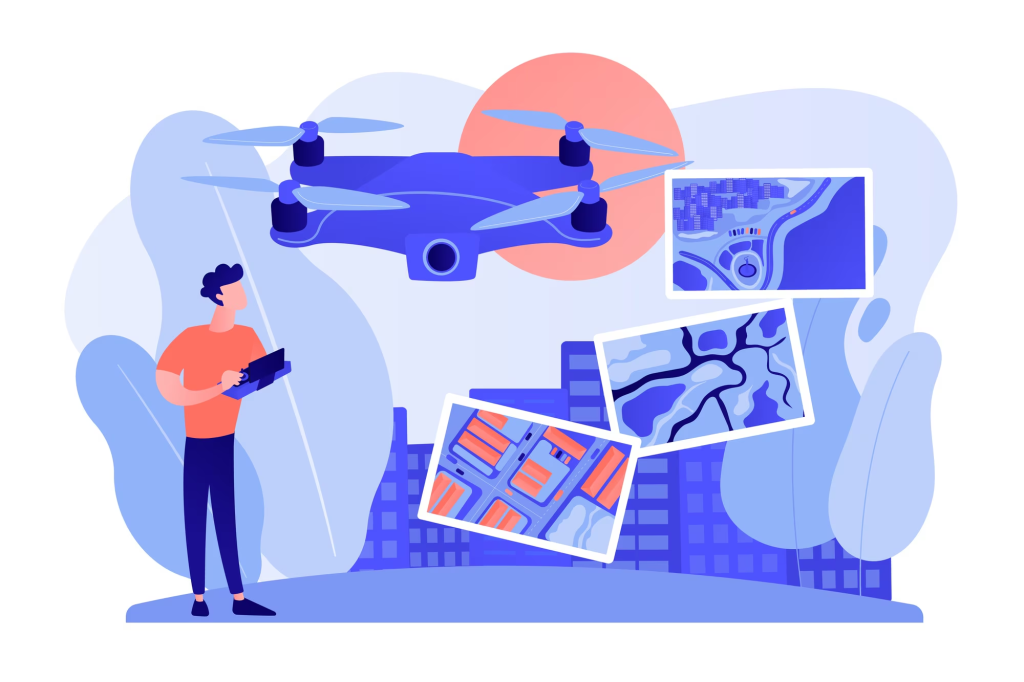Drone photography opens up new perspectives for creatives of all levels. But getting started can feel overwhelming with so many models, rules, and technical details. This drone photography guide walks you through everything you need to know to launch your first drone flight with confidence.
Whether you’re capturing landscapes, real estate, or travel scenes, the basics remain the same: fly responsibly, shoot creatively, and edit thoughtfully.

Choosing the Right Equipment for Drone Photography
Not all drones are created equal. For photography, look for drones with:
- A built-in stabilized camera (gimbal-mounted)
- At least 12MP resolution
- RAW photo capture
- 3-axis stabilization for smooth footage
Popular beginner-friendly models include the DJI Mini series and the Autel EVO Nano. These are light, portable, and offer excellent image quality.
Compare top drone cameras in our equipment guide.
Understanding Drone Rules and Safety
Before you take off, it’s essential to learn local drone laws. In many countries, you need:
- Registration of your drone
- Permission to fly in certain areas
- Certification for commercial use
General safety tips include:
- Avoid flying near airports, crowds, or private property
- Maintain visual line of sight
- Fly below 400 feet (120 meters)
The Federal Aviation Administration (FAA) provides up-to-date information for U.S. drone pilots.
Camera Settings That Matter in Drone Photography
Your drone camera settings are just as important as your flight skills. Use manual mode to control:
- Shutter speed – slower speeds for smooth motion, faster for sharp stills
- ISO – keep as low as possible to avoid noise
- White balance – adjust based on lighting conditions (don’t leave on auto)
- RAW format – gives flexibility in editing
Try the rule of thirds and leading lines to frame your shots effectively.
See more techniques in our creative photo composition tips.
Mastering Composition with a Drone
Aerial photography is unique because of its perspective. Great drone photos often include:
- Strong geometric patterns
- Shadows and light contrast
- Natural leading lines like rivers or roads
- Negative space for visual balance
Don’t forget to look down—it’s one of the most underused angles in drone work.
Drone Photography Guide to Editing Essentials
Post-processing brings out the best in your drone shots. Use tools like:
- Lightroom or Capture One for RAW adjustments
- Photoshop for advanced edits
- Mobile apps like Snapseed or VSCO for quick fixes
Key things to adjust:
- Exposure and contrast
- Sharpness and clarity
- Cropping for stronger composition
- Color balance for realism
Explore our guide to beginner photo editing tools.
Flying Responsibly as a Drone Photographer
A good drone photographer is both a skilled pilot and a respectful observer. Always fly with awareness of:
- Wildlife and nature
- Privacy and people’s comfort
- Local customs and cultural sites
Use your drone to tell stories, not just to show off altitude.
Why This Drone Photography Guide Matters
Following a structured approach makes drone photography accessible and rewarding. With the right gear, skills, and mindset, anyone can capture stunning aerial imagery while respecting safety and ethics.
This drone photography guide aims to support beginners through every step, from first takeoff to post-editing.
References:
Federal Aviation Administration (2024) Recreational Flyers & Modeler Community-Based Organizations. Available at: https://www.faa.gov/uas (Accessed: 9 May 2025).
National Geographic (2023) Drone Photography Tips from the Field. Available at: https://www.nationalgeographic.com (Accessed: 9 May 2025).
DJI (2024) Beginner’s Corner: First Drone Flight Checklist. Available at: https://www.dji.com (Accessed: 9 May 2025).






